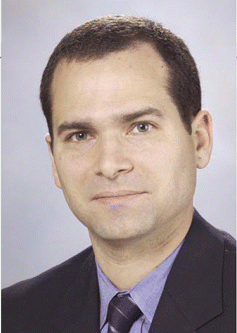Contraindications include (1) massive invasion of the preepiglottic space, because involvement of the hyoid bone would preclude preservation of this structure; (2) involvement of the pharynx or interarytenoid area; (3) cricoid cartilage invasion and infraglottic extension of the tumor reaching the cricoid; (4) arytenoid cartilage fixation; and (5) respiratory impairment (such as severe chronic obstructive pulmonary disease).
Explore This Issue
June 2006“As a more vocal group of surgeons has advocated for SCPL, surgery may find a greater role in primary treatment of intermediate-stage laryngeal cancer and certainly for selected radiation failures.” – Erich Sturgis, MD
For SCPL with CHEP, Dr. Weinstein said that indications include selected lesions with: (1) bilateral cord involvement (i.e., horseshoe lesions); (2) impaired true vocal cord mobility with limited subglottic and ventricular extension; or (3) true vocal cord fixation without arytenoid fixation.
Contraindications for SCPL with CHEP include: (1) preepiglottic space invasion (utilize SCPL with CHP in this case); (2) cricoid cartilage invasion or infraglottic invasion reaching the cricoid cartilage; (3) arytenoid cartilage fixation; or (4) respiratory impairment.
SCPL, though, is not possible in patients with cricoarytenoid joint fixation and those with spread of cancer between the arytenoids cartilages, to tongue base above, or far below the vocal cords, Dr. Holsinger commented.
A recent publication by Dr. Weinstein’s group at University of Pennsylvania suggests that SCPL can be safely performed in selected cancers with subglottic extension of 15 mm or less and without arytenoids fixation (Laryngoscope 2005;115:297–300). The surgery was found to achieve oncologically safe organ preservation in glottic cancers that extended beyond the traditionally accepted subglottic limit of 10 mm, Dr. Weinstein explained.
Which Procedure is Best?
At present, it is not clear which procedure provides the best functional outcomes in intermediate to advanced laryngeal cancer—chemotherapy and radiation, SCPL using CHEP or CHP, or laser surgery, which has gained popularity. Dr. Holsinger noted that laser surgery, removing laryngeal structures through the mouth, necessitates dividing the tumor in half, “and this violates Halsted’s classically accepted oncologic principles.”
“The choice between chemotherapy and radiation versus SCPL is up in the air. For diffuse tumors, SCPL is not optimal, but many patients who could benefit from SCPL are currently treated with chemotherapy and radiotherapy,” Dr. Holsinger said.
“Unfortunately, as surgeons, we don’t have level —A’ evidence-based medicine studies that support this approach, such as a randomized prospective trial—despite strong support for SCPL among otolaryngologists,” Dr. Holsinger said.
More well-designed scientific studies are needed to explore which patients should receive chemotherapy and radiotherapy versus SCPL. Dr. Sturgis said that academic centers like M.D. Anderson use a multidisciplinary approach with group decision-making to determine treatment recommendations. “As this multidisciplinary approach has gained acceptance in much of the US, radiotherapy or chemoradiotherapy became the standard for intermediate-stage laryngeal cancers. However, as a more vocal group of surgeons has advocated for SCPL, surgery may find a greater role in primary treatment of intermediate-stage laryngeal cancer and certainly for selected radiation failures,” Dr. Sturgis commented.

Leave a Reply